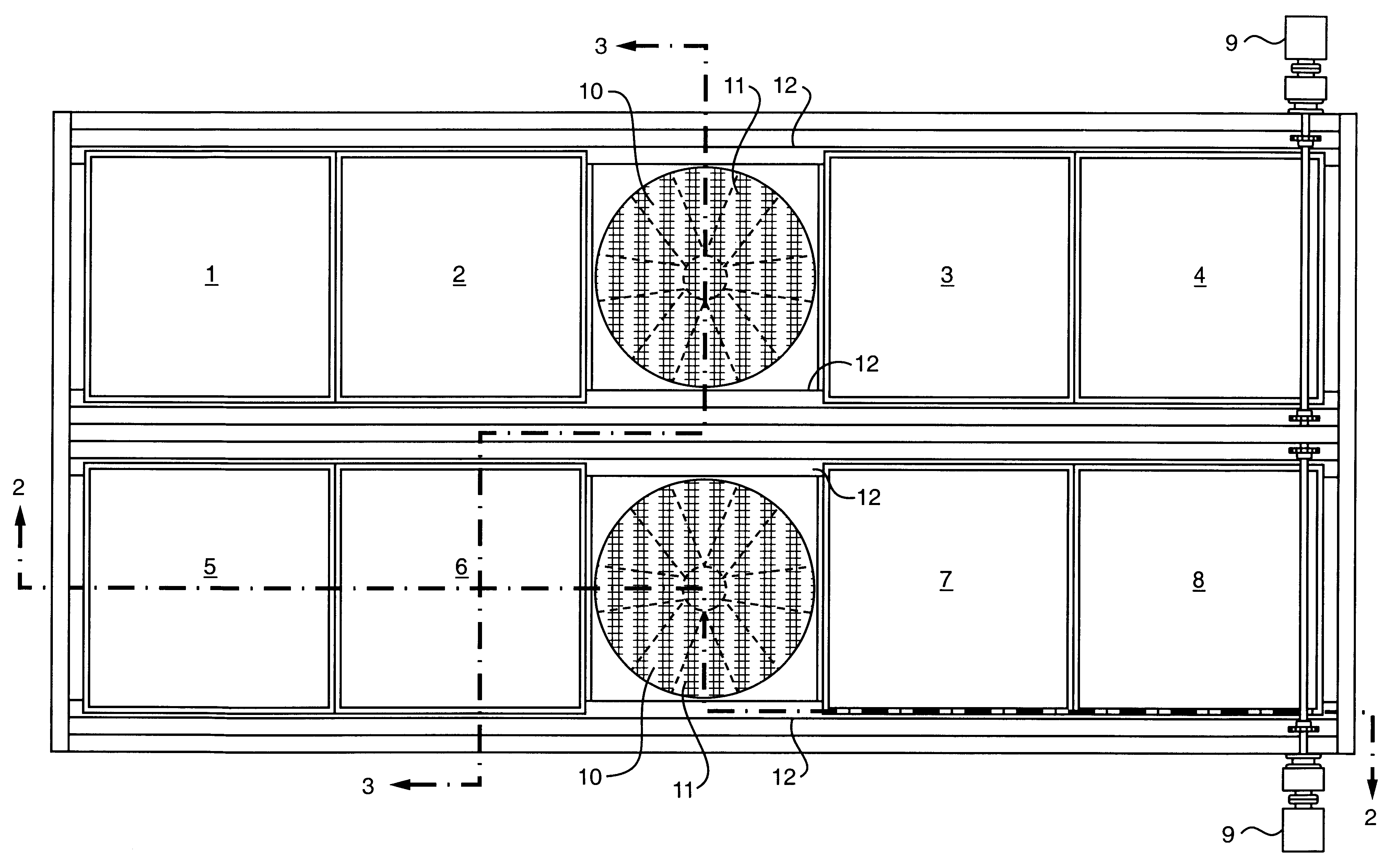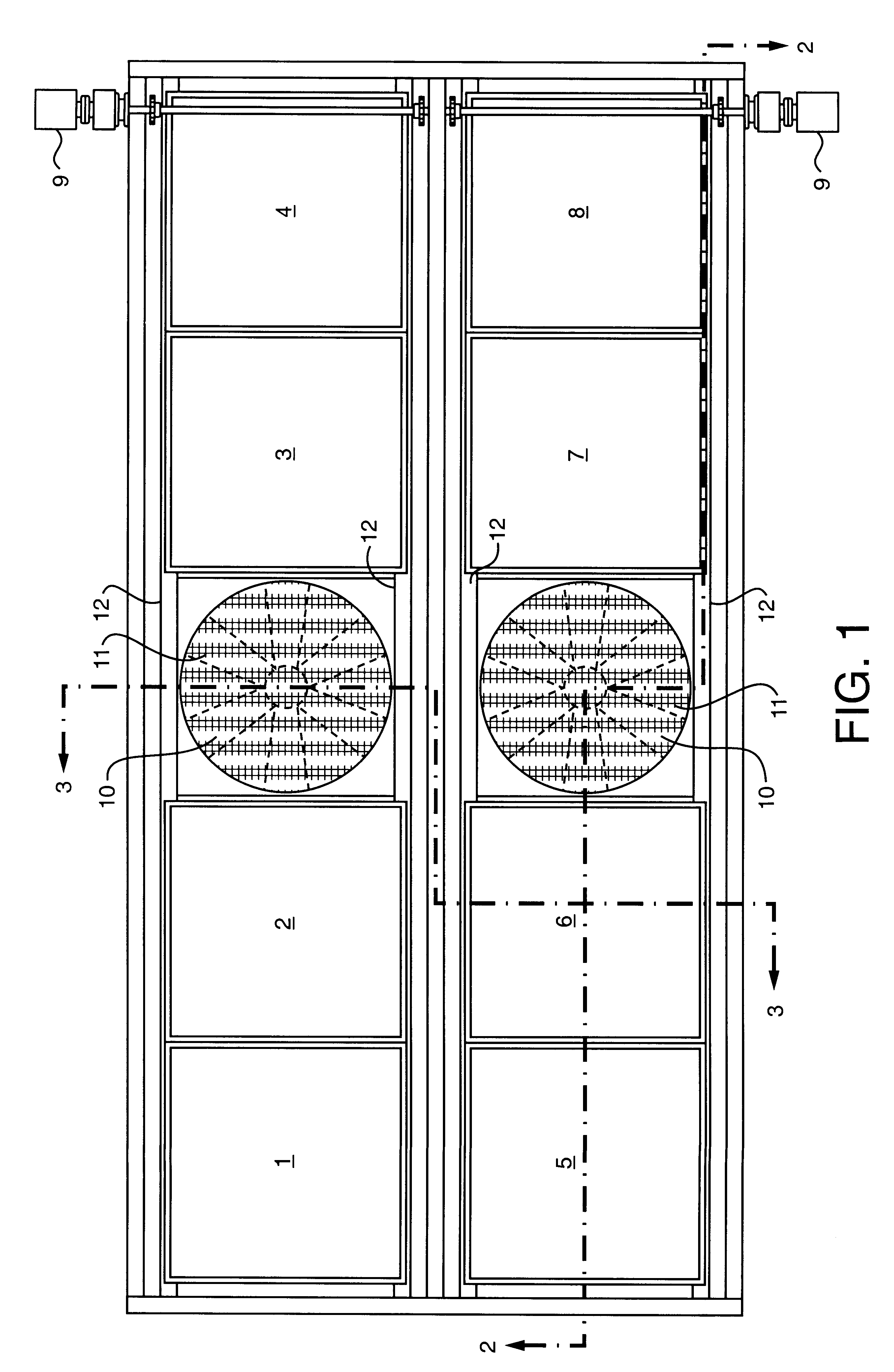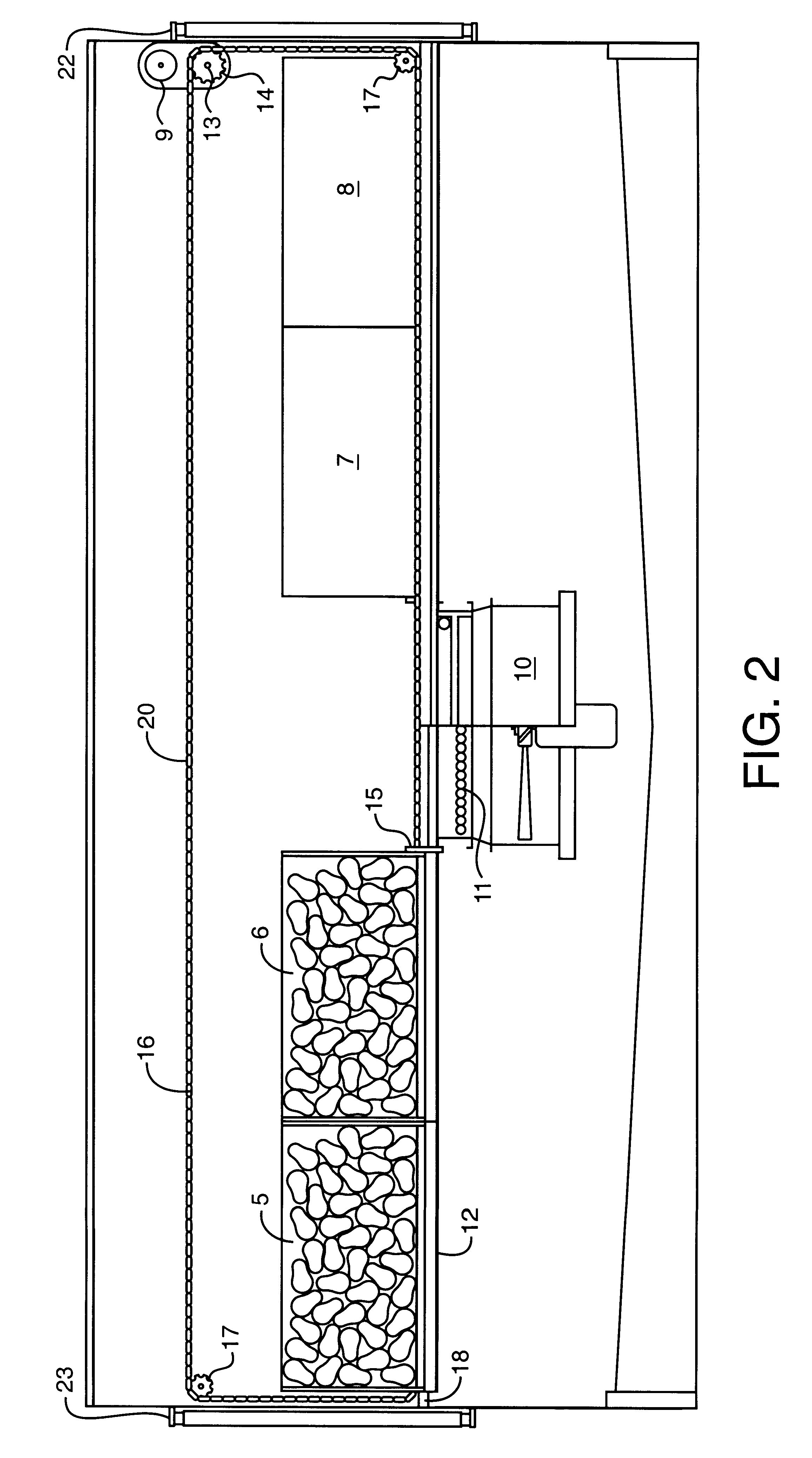Mechanically loaded direct air circulation commodity disinfestation chamber
a technology of commodity disinfestation and mechanical loading, which is applied in the field of mechanically loaded direct air circulation commodity disinfestation chamber, can solve the problems of poor heat uniformity, insufficient or excessive heating, and papayas are particularly susceptible to heat damage, so as to reduce construction and operating costs, reduce heat loss and airflow inefficiencies, and minimize the effect of temperature distribution variation
- Summary
- Abstract
- Description
- Claims
- Application Information
AI Technical Summary
Benefits of technology
Problems solved by technology
Method used
Image
Examples
Embodiment Construction
The following table is designed to show the difference in uniformity and temperature control between a treatment chamber of the prior art and the treatment chamber of the present invention. The differences in performance is illustrated in Table 1, which shows measured temperatures for a prior art chamber and for the present chamber during test runs. The prior art chamber includes the fan / heat exchanger assembly on the outside of the treatment chamber using a duct construction to blow the heated air into the treatment chamber. The bins in this chamber are stacked two high and the air flow is reversed every thirty minutes. The test on the prior art chamber was run on Jan. 7, 1993, until all of the monitored fruit had their fruit center temperatures raised to 47.2.degree. C. When the last temperature probe, inside a fruit center, reached 47.2.degree. C., the cooling water was turned on immediately and the temperatures of all the probes recorded. Thirty six probes were used to measure t...
PUM
| Property | Measurement | Unit |
|---|---|---|
| temperatures | aaaaa | aaaaa |
| temperatures | aaaaa | aaaaa |
| temperature | aaaaa | aaaaa |
Abstract
Description
Claims
Application Information
 Login to View More
Login to View More - R&D
- Intellectual Property
- Life Sciences
- Materials
- Tech Scout
- Unparalleled Data Quality
- Higher Quality Content
- 60% Fewer Hallucinations
Browse by: Latest US Patents, China's latest patents, Technical Efficacy Thesaurus, Application Domain, Technology Topic, Popular Technical Reports.
© 2025 PatSnap. All rights reserved.Legal|Privacy policy|Modern Slavery Act Transparency Statement|Sitemap|About US| Contact US: help@patsnap.com



